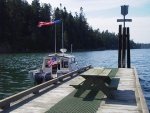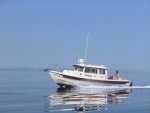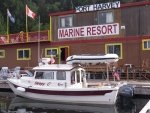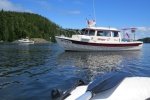kennharriet
Member
Dreaming of boating while sitting by the wood stove, watching the blizzard outside. We recently watched the Seattle Boat Show zoom presentation by “Cruising Sea Venture”. It was about winter cruising in SE AK. What intrigued me was they apparently pleasure boated through BC without landing and this was permissible with Canadian Customs. No problem for them as they have 2,000 gal of fuel.
Like others, I have been keeping current with Transport Canada’s continuing limitations on border crossing due to the pandemic. It appears Canada will not reopen the border this year for foreign recreational boaters. The distance from the closest WA port to Ketchikan is well beyond the fuel range of the typical Cdory. However, carrying extra fuel that trip could be possible if there was a refuel option midway. If it is true that BC can be transited without landing, I’m surprised an enterprising individual has not figured out how to offer floating fuel in Canada.
Assuming it is legitimate to transit without landing, I’m curious what the logistical considerations might be, from those who have done it in non pandemic times. Also I’m curious if anyone has researched the AK Ferry costs from Bellingham to Ketchikan? I have access to a truck in Ketchikan to offload the boat on a trailer and launch from there.
I know, I know, maybe I should be patient and just dream about another summer doing pack trips with the mules in the back country. Ken
Like others, I have been keeping current with Transport Canada’s continuing limitations on border crossing due to the pandemic. It appears Canada will not reopen the border this year for foreign recreational boaters. The distance from the closest WA port to Ketchikan is well beyond the fuel range of the typical Cdory. However, carrying extra fuel that trip could be possible if there was a refuel option midway. If it is true that BC can be transited without landing, I’m surprised an enterprising individual has not figured out how to offer floating fuel in Canada.
Assuming it is legitimate to transit without landing, I’m curious what the logistical considerations might be, from those who have done it in non pandemic times. Also I’m curious if anyone has researched the AK Ferry costs from Bellingham to Ketchikan? I have access to a truck in Ketchikan to offload the boat on a trailer and launch from there.
I know, I know, maybe I should be patient and just dream about another summer doing pack trips with the mules in the back country. Ken




